New England’s most Northern state could be a separate country. Mainers are self-sufficient. Maine lacks metropolitan centers and endless suburbia. Instead, the state is dotted with small villages whose proximity is masked by the rocky coastline. The lobsterman was created by Maine’s landscape and history. Lobsters flourish in Maine because of the ideal combination of a rocky bottom, cold water and forward thinking fisheries policies. Fisheries rules require lobsters to be tossed back based on certain sizes and whether they are carrying eggs. Lobster bodies are measured when caught and must be between 3.25 and 5 inches. However, if you ask a lobsterman if a 10 pounder is tasty they may accidentally reveal they kept some above the size limit.
Lobsters have their claws banded after being caught to prevent cannibalism. I suppose even lobsters know that lobsters are tasty.
Initially, Lobsters were not considered a delicacy and were only eaten by locals, not gourmands. The first major advancement in expanding the transport of lobsters was a “well smack” that circulated sea water into the tank holding the catch, keeping it fresh. In the 1880’s, the canning of lobster became the primary output for the catch. But by the 1950’s lobsters, were flying cross-country and Californians could eat real lobster instead of spiny lobster.
- Old time Lobster boat
- Old time lobster cannery
- Canned lobster 1900’s
To get a license to fish for lobster, you need to do a two year apprenticeship. Also, you need to own a boat and traps and do the fishing yourself. These rules prevents large corporations from buying a fleet of boats and hiring captains. The maximum number of traps a lobsterman can work is 800. After the apprenticeship, the aspiring lobsterman might have to wait years for a license as some regions require three lobsterman to retire before they issue each new license.
- Ocean covered in traps
- Lobster pot buoy
- Modern Lobsterman at work
- Big Lobster cooker
- Final work product
- Lobster junk
Lobster fishing encomasses a few steps:
1) Baiting the trap with crab, herring or something else stinky. Note: Do not moor to leeward of a lobsterman baiting his traps.
2) The bait is placed in the Head (first half of the lobster trap). The lobster will enter the Head but is unable to back out so they proceed to the Parlor where they are trapped. The Parlor also holds a brick to keep the trap on bottom of the sea.
3) The Parlor has an escape hatch for small/young lobsters. Lobstermen claim the escape hatch is to protect the youthful lobster but I see something more sinister. They are trying to teach lobsters at a young age not to be fearful of the traps. Then, when the lobster grows larger, he realizes the lessons of his youth were all wrong.
3) The traps are laid and then, 48 hours later, the traps are picked up. The traps are marked by a buoy with a unique coloring scheme associated with the lobsterman. One to three traps are attached to each buoy.
Hope you enjoy E.B. White’s take on the Lobsterman. Also, if you would like to learn more about Maine’s history, Gail enjoyed reading The Lobster Coast: Rebels, Rusticators & the Struggle for a Forgotten Frontier, by Colin Woodard
Lobsterman by E.B. White from Two Fish on Vimeo.
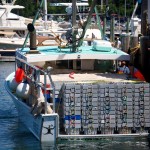

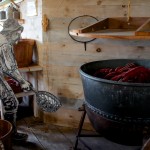

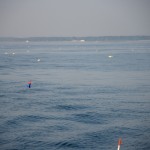
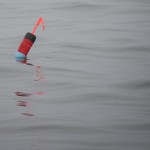


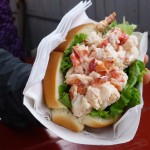
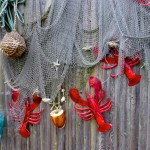
Comments are closed.